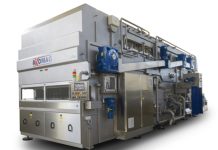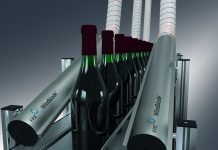The per cent increase in total polyphenols ranges between 6.45 and 45.90%, while that of ortodiphenols between 4.38 and 32.74%. Besides, those increases result to be more evident when the dose is increased from 0.5 to 1.5% and working with Uvazym 1000 Extra, followed by Maxoliva and Uvazym 1000 Couleur. The literature reports the fact that the concentration of phenolic substances and in particular of ortodiphenols in oil decreases during kneading, above all by cause of oxidization reactions. Therefore, it can be assumed that in the samples of Coratina oil such decrease happens in a lower proportion in the case when the paste is added with enzymes. Therefore, enzymes can cause changes in the structure of the paste itself slowing in a way the speed of the oxidization reactions. Owing to some authors the increase in phenolic compounds is partly due also to a decrease in their interactions with polysaccarides. In fact, polyphenols are able to give origin to compounds with these substances, which probably derives from the capacity of polysaccharides to form a structure including the phenophenols themselves. These interactions can reduce the release of the phenolic compounds in oil during the crushing and the kneading kneading. Anyway the data obtained show that the increase in phenolic compounds is due to the biochemical action exerted by the enzymatic formulations on the complex molecular structure of olives (where those compounds are abundant, above all as glycosides and esters), from which a major quantity of those compounds is released to dissolve in oil. In addition, the formulations tested proved to be effi cient in increasing the extractive yields and in breaking not only the liquidsolid emulsions, but also the liquid-liquid ones. In fact, in all cases enzymes proved to have a positive effect on the rheologic characteristics of the paste so favouring the separations of the phases (liquid and solids). In the end, it is worth mentioning the fact that the oils containing high level of ortodiphenolic compounds (substances with strong antioxidating characteristics), like those extracting by using enzymes, have high resistance of oxidization and consequently an extended shelf-life.
Higher quantities of phenolic substances (both total polyphenols and ortodiphenols) have been found also in the samples of water of vegetation (Tab. 1) extracted from the olive paste treated with enzymes with respect to the check samples. Also in this case, the increases are more evident when increasing the dose from 0.5 to 1.5% and working with Uvazym 1000 Extra, followed by Maxoliva and Uvazym 1000 Couleur. Therefore, in consequence of the enzymatic treatment the phenolic compound dissolve in bigger quantity in liquid phases, oil and water, and their accumulation is connected to their coeffi cient of distribution. Yet, the water of vegetation is regarded as a highly polluting element. Some studies, in fact, showed its phytotoxycity suggesting that such effect is due to its phenolic components. However, the refl uent liquid could be even used as a possible resource by cause of the presence in it of valuable products (antioxidizing, in fact) and simple and complex sugars making of it a possible base for fermentation processes. Besides, the increase of phenolic substances caused by enzymatic treatment could favour the water of vegetation as a source of antioxidizing substances. In the end, the enzymatic adjuvants tested in this study seem to be an effective instrument to improve the quality and the extraction yield of oil, two variables that have not been optimized so far. Currently the research is focused on the study of the synergic effects of the various enzymatic activities through kneading tests performed by adding the paste to the binary and ternary mixes/ mixtures of the three formulations.
Bibliography
F. Visioli, C. Galli, F. Bornet, A. Mattei, R. Patelli, G. Galli, D. Caruso, Olive oil phenolics are dose-dependently absorbed in humans, FEBS Letters, 2000,468, 159-160
L.S. Conte, L. Pizzale, R. Bortolomeazzi, S. Vichi, Valutazione dell’attività antiossidante di oli extra vergini di oliva, Progress in Nutrition, 2002, 4, 17-23
E. Vierhuis, M. Servili, M. Baldioli, H.A. Schols, A.G.J. Voragen, G.F. Montedoro, Effect of treatment during mechanical extraction of olive oil on phenolic compounds and polysaccharides, Journal of Agricultural and Food Chemistry, 2001, 49, 1218-1223
A. Ranalli, L. Lucera, S. Contento, N. Simone, P. Del Re, Bioactive constituents, flavors and aromas of virgin oils obtained by processing olives with a natural enzyme extract, European Journal of Lipid Science and Technology, 2004, 106, 187-197 Official Journal European Communities (1991) n.L. 248 of 5 September, Regulation CE 2568/91
A. García, M. Brenes, M.J. Moyano, J. Alba, P. García, A. Garrido, Improvement of phenolic compound content in virgin olive oils by using enzymes during malaxation, Journal of Food Engineering, 2001, 48, 189-194
by Danilo De Faveri, Dipartimento di Ingegneria Chimica e di Processo “G.B. Bonino”, Università di Genova




